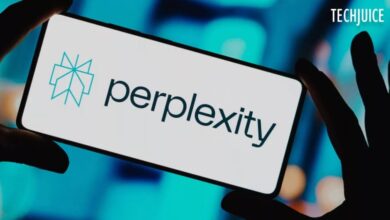
X WILL PAY ‘ABOUT $10 MILLION’ TO SETTLE LAWSUIT OVER DONALD TRUMP’S TWITTER SUSPENSION
$10 million settlement in Twitter ban lawsuit sparks industry shake-up. Legal implications and deplatforming effects revealed.

Twitter Ban Lawsuit Overview
In February 2025, X (once Twitter) cut a $10 million deal with former President Trump to settle a lawsuit about his Twitter suspension right after that wild January 6 Capitol incident. Trump’s suspension happened two days after the riot, with Twitter saying it was to prevent more chaos (CBS News).
Timeline of Events
- January 2021: Boom! Twitter kicks President Trump off their site post-Capitol chaos.
- July 2021: Trump fires back with a lawsuit, arguing his First Amendment rights got squashed.
- May 2022: A U.S. district judge tosses Trump’s Twitter lawsuit out the window.
As the lawyers went at it, they dove into discovering every little detail: pulling out documents, staging interrogations, chatting with experts, and more. Oftentimes, cases cool off with a settlement before reaching court, with people preferring arbitration to dodge the courtroom drama (Stoel).
Key Parties Involved
- X (formerly Twitter): The social media giant that showed Trump the door.
- President Trump: The former POTUS who found himself booted from Twitter after the Capitol mess.
This $10 million handshake between X and Trump ain’t just about them—it throws a spotlight on the whole tech world’s tangle with free speech and how they play at being the peacekeepers. It opens up a larger convo on the tricky dance of moderating speech in today’s digital playground.
Settlement Details
To set the scene, we’ve got a doozy on our hands: X, previously Twitter, is coughing up a cool $10 million to smooth over a lawsuit filed by former President Trump back in 2021. Trump’s beef? He alleged censorship after his Twitter account got the boot following comments on the Jan. 6 Capitol happenings. Those comments didn’t quite sit well with Twitter’s rules against cheering on violence—even if it made quite the splash on the news scene (Forbes).
Financial Resolution
Fast forward to today, X is writing that $10 million check as a peace offering. It’s a big hint that X is happy to clear the air and dodge bullet-after-bullet about their moderation moves. You’ll remember another saga where Meta, the puppet master behind Facebook and Instagram, did something similar, shelling out $25 million to hush up a lawsuit about kicking Trump off their platforms after the Capitol chaos (CBS News). These settlements show everyone that moderating content ain’t just about keeping your site clean; it’s about who might come knocking with a lawsuit.
Implications for Tech Industry
Brace for impact as this deal between X and Trump changes the game for how tech giants handle big personalities online. Balancing the whole “everyone gets to say their piece” deal with snuffing out harmful blabber is trickier than deciding who gets the last piece of pie. Staring down big settlements like these might have other tech firms shaking in their boots, rethinking how they lay down the internet law to dodge courtroom drama.
This settlement? Best believe it’s lighting up discussions among tech CEOs and keyboard warriors alike about the clout these platforms hold over free speech and what they should do with it. As companies tread these murky waters of what’s okay to post and what’s not, this case might guide how future twitchy situations get sorted. We’re talking shaping the rules of the game when it comes to online chat, who’s accountable for what, and where everyone fits into this digital shouting match.
Legal and First Amendment Ramifications
The legal squabbles over Donald Trump’s Twitter ban have stirred quite the conversation about what folks can say online, especially when we’re talking about big-name public figures navigating the web.
First Amendment Rights
When the U.S. Court of Appeals for the Second Circuit weighed in on Knight Institute v. Trump, they basically told Trump that giving critics the boot from his Twitter wasn’t cool with the First Amendment. Back in May 2018, the district court decided that his Twitter was sort of like a public square where everyone gets to shout their piece, highlighting that Chucking people out for their opinions was unconstitutional.
Justice Thomas piped up too—he figured there’s more to the whole saga of public figures and their social media accounts. He pointed out the weirdness around who gets to say what and how much control social media companies have anyway.
Legal Precedents Set
Settling this courtroom drama laid down a new rule: Public leaders can’t just shush folks with a different opinion online. Katie Fallow from the Knight Institute is all about making sure this means people get to freely chat in this digital meet-up without worrying about being booted (Knight First Amendment Institute).
The Knight Institute has been pretty busy defending those free speech rights. Whether it’s butting heads in digital privacy fights or watching out for former officials being muzzled, they’re trying to keep digital life fair and just (Knight First Amendment Institute).
Trump’s Twitter saga might have ended, but the ripple effects haven’t. There’s a lasting impact on what we can say online, how public chats unfold, and what folks running the digital show need to think about.
Impact of Booting People Off Platforms
When tech companies give folks the boot from their online spaces, especially with the troublesome stuff like extremist content, it’s a big deal. Getting rid of people’s access to these digital hangouts has stirred up all sorts of debates about whether it’s a form of censorship. Yet, kicking off troublemakers has definitely put a dent in how these unsavory characters or groups operate online.
Booting Strategy
This act of giving people the digital heave-ho usually happens when someone breaks the house rules online. It’s seen as a tactic to slow the roll of lies, trash talk, and nasty movements. Everyone remembers when Twitter pulled the plug on accounts like that of former President Trump. It was a real firestorm about speech rights and censorship (Vox has more on that).
Head honchos like Twitter’s Jack Dorsey have tried to clear the air on decisions to boot folks, saying it wasn’t all puppeteered by others. They reckon that these moves aim to weed out harmful chatter while juggling the many ways people interpret free speech.
Effects on Extremist Content
Getting chucked off mainstream spaces works wonders on breaking up the band for extremist types. It snips their lifeline to ropes in more followers, shrinks their megaphones, and messes up their internal gossip circles. By locking them out of the big digital plazas, their nasty messages have fewer ears to find.
And it doesn’t stop there. When major hangout spots like Facebook and Twitter slam the door, extremists find it harder to snag fresh recruits even on less trafficked alleys of the internet. These huge online malls make it complicated for dangerous ideologies to catch a ride on casual browsers.
There’s evidence that when platforms draw the line and boot hatemongers, the online vibe shifts. After Reddit wiped out some sticky subreddits in 2015, hate talk spiraled down in those who stuck around. This tells us that a “kick ‘em out” attitude can clean up the chat and maybe scare other baddies away.
The debate over booting people continues to simmer, as it strikes a chord between keeping the speech free and making platforms a safe place. Seeing how these strategies affect extremist content is key for shaping the digital playbook moving forward.







